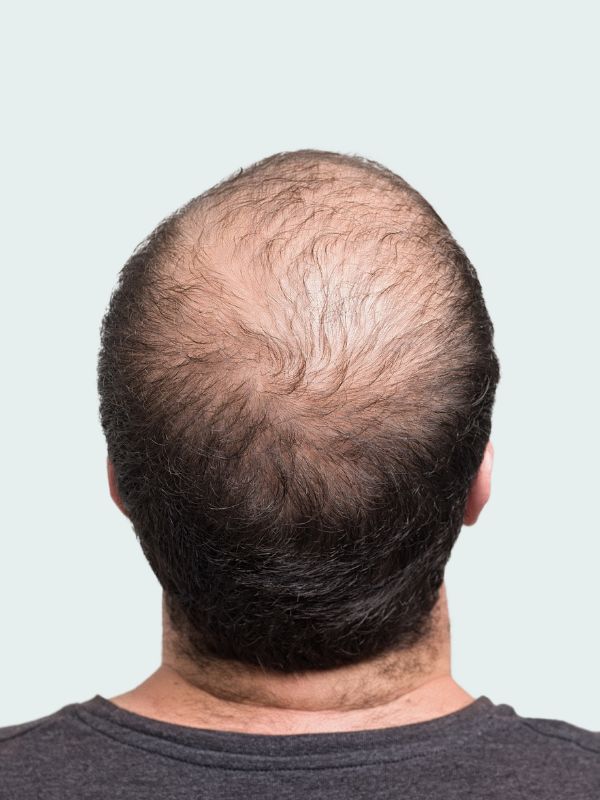NVYA Aesthetics offers Hair Transplant Surgery as a proven solution to permanently defeat the problem of significant hair loss. Dr. Hiren Bhatt, the expert Plastic Surgeon explains all the details of both FUT and FUE Hair Transplant.
We would be delighted to serve you with our services, let us get in touch with you

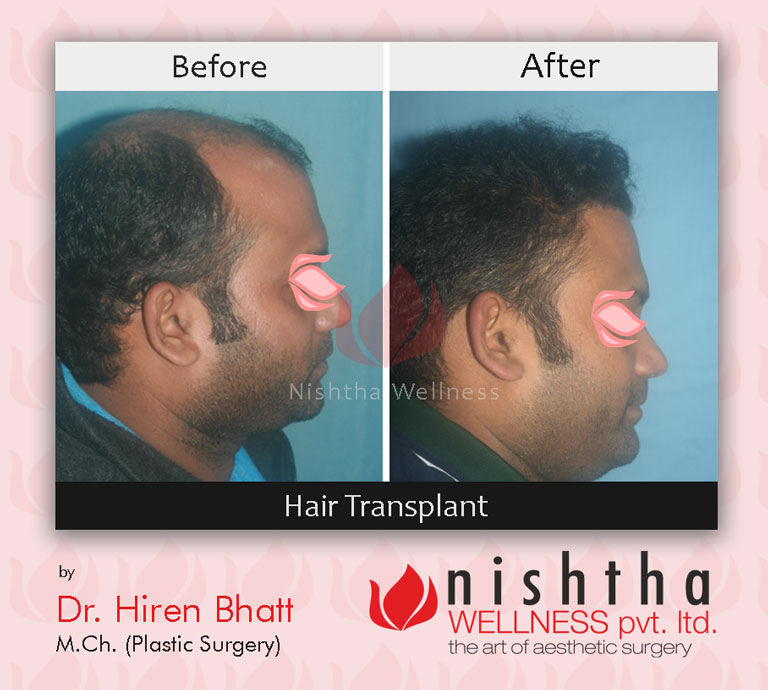





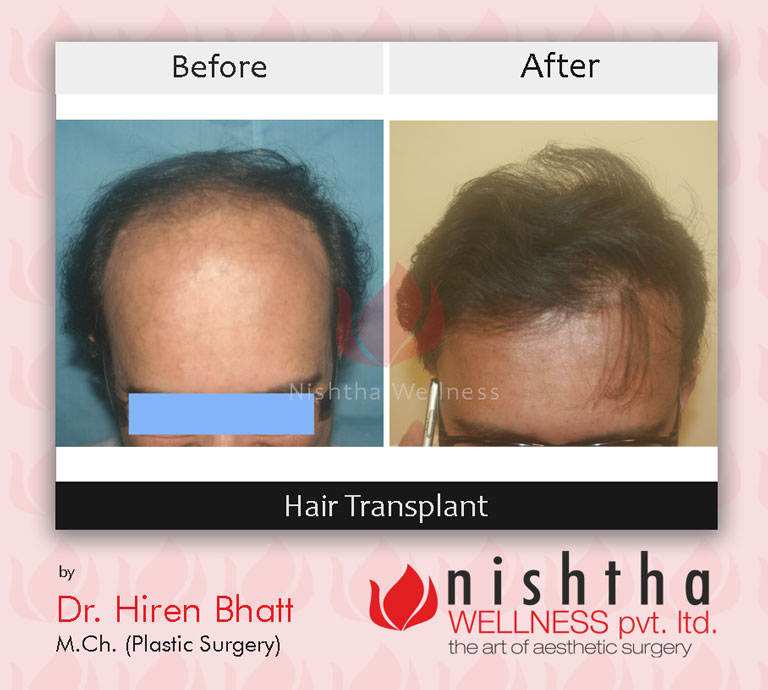



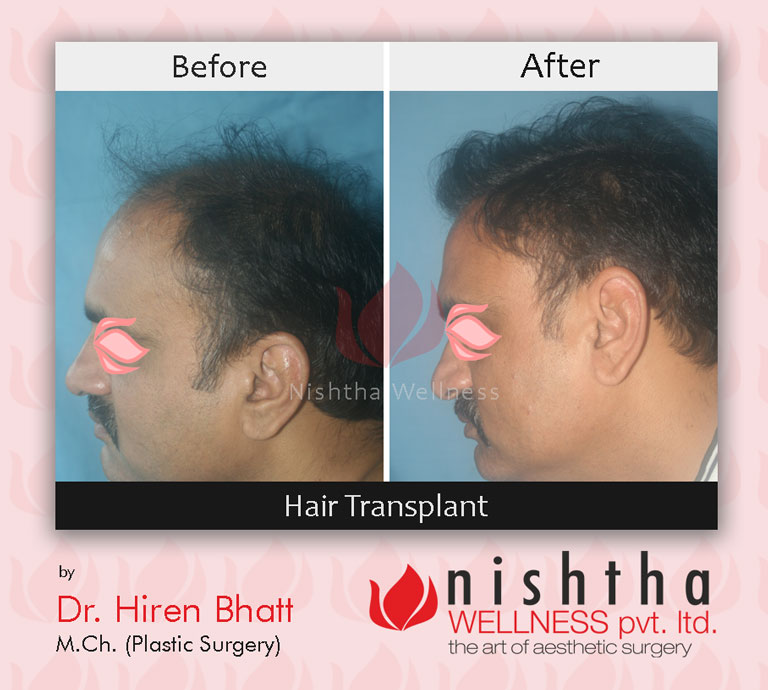



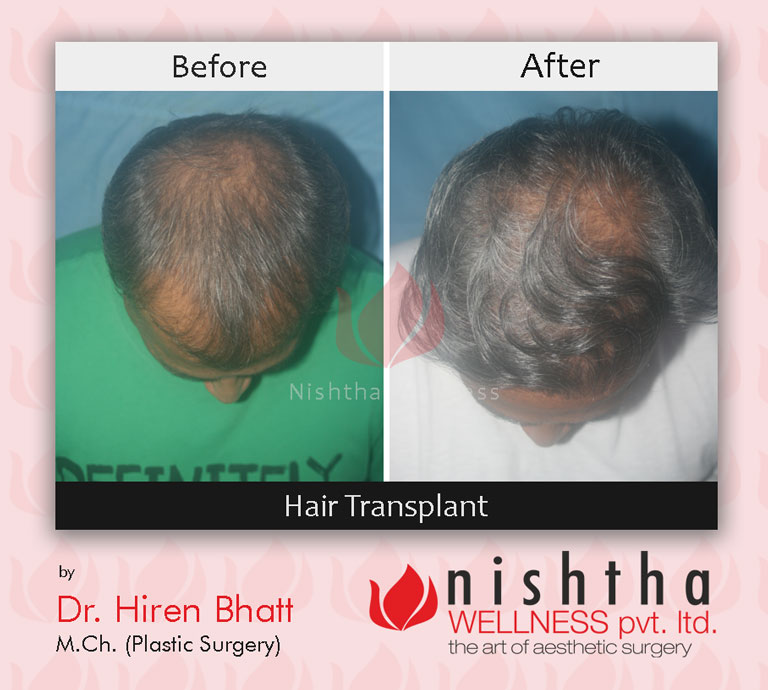


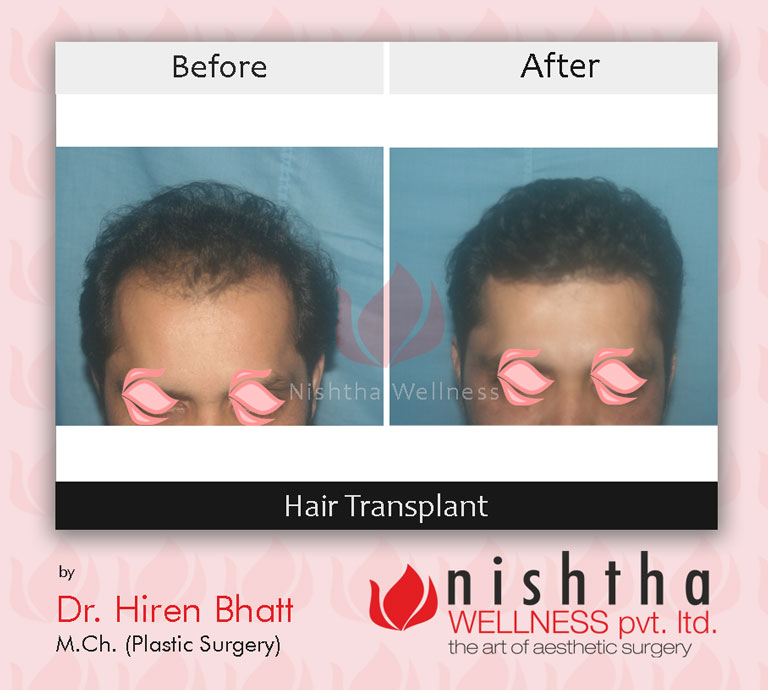

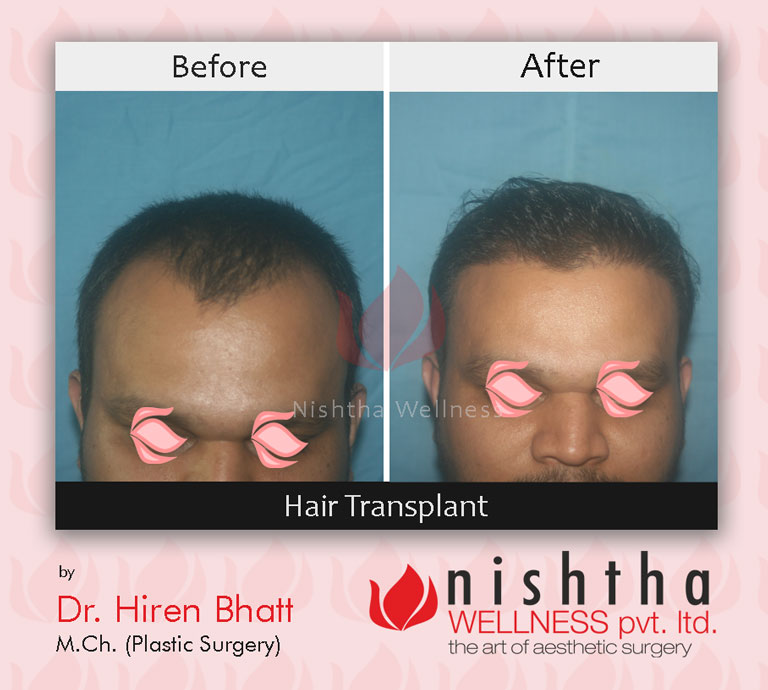
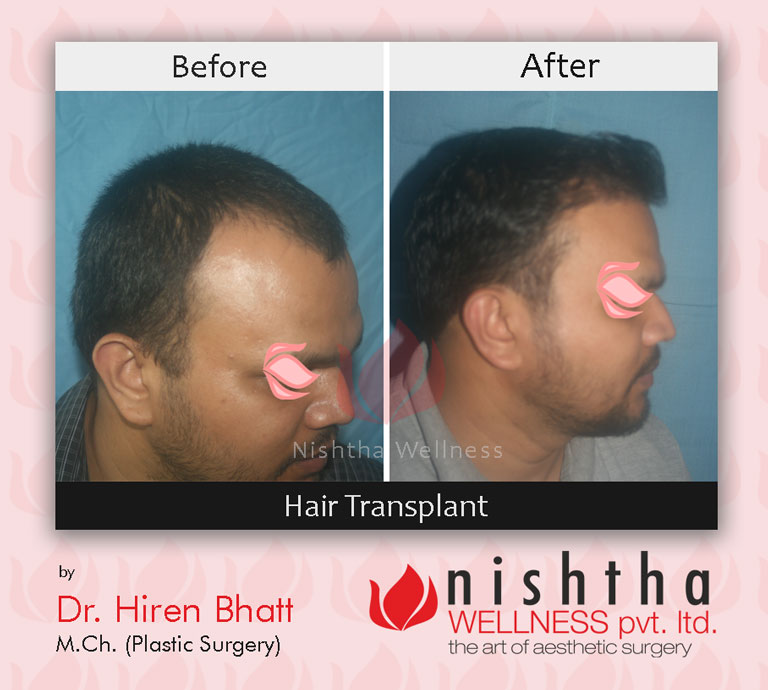

They are very gentle and do their best to give the patients the expected results. I am very happy with their office, equipment, kindness and professionalism.

The staff was friendly and professional, and the treatment left me feeling refreshed and rejuvenated. Thank you for the wonderful service, I'll definitely be visiting again!

The treatment targeted areas of concern and helped to improve the texture and firmness of my skin, but most importantly, the staff knew what they were doing.

Disclaimer: The before and after snapshots serve as visual representations of the outcomes achieved by the doctor. The treatments and results can vary based on individual patients' clinical factors. These images are intended to raise awareness about the diverse range of procedures available at NVYA Aesthetics.
Hair is often referred to as the “CROWNING GLORY”. Hair fall, a receding hairline or significant hair loss is not just a “physical” issue. It also affects the confidence and self-esteem of the individual irrespective of gender and age.
Dr. Hiren Bhatt, Vadodara’s most trusted Plastic Surgeon offers Hair Transplant Surgery at NVYA Aesthetics as a proven solution to permanently defeat the problem of significant hair loss. Dr. Hiren Bhatt is a skilled Plastic Surgeon who can perform both FUT (Follicular Unit Transplant) and FUE (Follicular Unit Extraction) Hair Transplant with precision.
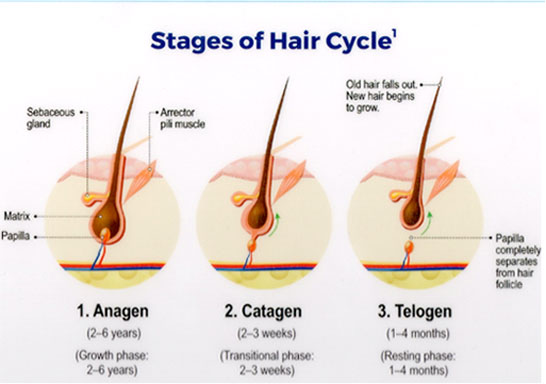 Phases of Hair Growth
Phases of Hair Growth
 Hair Growth Cycle
Hair Growth Cycle
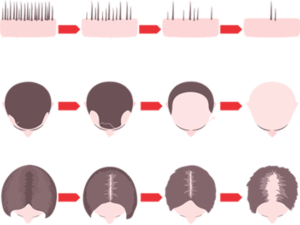 Stages of Alopecia
Stages of Alopecia
NVYA Aesthetics has a bouquet of services both surgical and non-surgical that can help in eliminating the problem of hair loss. Dr. Hiren Bhatt’s thorough evaluation of your case will determine what treatments would suit you the best.
Non-surgical treatments for hair loss management include Mesotherapy, PRP and Low-Level Laser Therapy (LLLT).
Surgical Treatment for Alopecia at NVYA Aesthetics, Vadodara is Hair Transplant. Dr. Hiren Bhatt has a vast experience of performing Hair Transplant on patients using the FUT or the FUE technique.
Hair Transplant is a surgical technique performed by a trained Plastic Surgeon. In this procedure, the Surgeon removes hair follicles from one part of the scalp and places them carefully over the balding areas.
There are two renowned techniques used in modern Hair Transplants – FUE and FUT.
FUE stands for Follicular Unit Extraction. It is a hair transplant surgery which is performed by highly skilled Board Certified Plastic Surgeon – Dr. Hiren Bhatt at NVYA Aesthetics, Vadodara.
Dr. Bhatt harvests Follicular units from a healthy donor site and places them into micro slits made in the recipient area. Here the hair follicle units are cored with the help of motorized punch. They are then collected in the small canister by suction or are picked up with micro-forceps using no-touch technique and are collected in a petri dish. There are no stitches given and therefore the pain is less in this method.
The FUE technique at NVYA Aesthetics, Vadodara is best suitable for a hair transplant procedure, which typically needs a smaller number of grafts (about 1500-2000 grafts). A Follicular unit contains multiple healthy hair follicles with different directions. Our FUE hair transplant surgery is preferred by patients because of the speedy recovery and no visible linear scarring on the back of the scalp.
FUT stands for Follicular Unit Transplant. FUT Hair transplant is a surgery performed to treat baldness or alopecia. The procedure involves removing healthy hair follicles from one area of the body (known as the donor area), usually from the posterior aspect and sides of the head and transplanting them in the area where there is no hair (known as the recipient area), usually the anterior part and crown of the head. The hair follicles used for the purpose of removal and grafting are called “follicular units”.
Dr. Hiren Bhatt, NVYA Aesthetics’ Plastic Surgeon, chooses the donor area from the back of the head or the sides of the head.
A linear strip is harvested from the centre of the back of the head. The strip is microscopically dissected into smaller units known as follicular units known as grafts. These grafts are then implanted on the head where there is no hair.
The surgeon performing this procedure needs to be highly skilled since the follicular units are fragile and delicate to handle. Dr. Hiren Bhatt’s training and experience in Plastic, Reconstructive and Cosmetic Surgery, gives him an advantage in executing this procedure very meticulously.
Dr. Hiren Bhatt has set forth some basic criteria for a candidate to be an ideal candidate for Hair Transplant at NVYA Aesthetics, Vadodara:
During the first visit, Dr. Hiren Bhatt, our Board Certified Plastic Surgeon with expertise in hair transplant surgery will obtain a detailed medical and surgical history and history of any hair treatment taken so far.
The hair and scalp will be evaluated and hair loss will be graded. Non-surgical and surgical treatment options will be discussed. If you are the right candidate for the hair transplant, you will be explained the whole procedure. The appropriate technique for your case – FUE or FUT will be chosen. An approximate number of grafts required will be told to you. When you agree for the surgery, the procedure will be scheduled.
The main purpose of the consultation at NVYA Aesthetics, Vadodara is to understand your unique case and your expectations from the hair transplant. It is essential that both you and Dr. Hiren Bhatt are on the same page from the very beginning.
| ISSUE | FUE | FUT |
|---|---|---|
| Scarring | Small round Scars | One line of scar |
| Healing | Shorter | Longer |
| Post-Operative Pain | Little or No | Some but Bearable |
| Donor Area Shaved | Yes | No |
| Risk of Harvesting Non-Permanent Hair | Yes | Much Lower |
| Graft Quality | Variable | High |
| Follicular Unit Gain | Low | High |
| Body Hair | Can be Harvested | Cannot be Harvested |
| Graft Outside Body | Longer Time | Lesser Time |
| Cost of Treatment | Higher | Lower |
| Short Haircuts | Possible | Can expose the Scar |
| Large Bald Areas | Less Effective | More Effective |
At NVYA Aesthetics, we have an easy to follow protocol in the days leading up to the Hair Transplant Surgery.
Following are the steps that are taken before the surgery:
Dr. Hiren Bhatt will ask you to undergo a couple of routine blood and urine tests. You may be asked to refrain from taking any blood-thinning medicines in the days leading up to the surgery.
Apart from this, there is nothing a patient needs to worry about. NVYA Aesthetics takes care of the rest.
Dr. Hiren Bhatt, the accredited Plastic Surgeon at NVYA Aesthetics, Vadodara performs Hair Transplant Surgery with the highest degree of precision to ensure natural-looking results and patient safety.
Step 1 – Anaesthesia
The procedure is done under local anaesthesia. You do not have to fast before or after surgery. You will have a few needle pricks to numb the scalp. The effect generally lasts through the entire duration of surgery. You may be relieved for a lunch break if the session is going to last longer.
Step 2 – Extraction of Donor Tissue
Dr. Hiren Bhatt will remove the donor tissue as one single strip from the back of the head. It will be then closed very meticulously. The healthy hair follicles from the strip will then be microscopically dissected.
Step 3 – Graft Placement
Follicular units harvested by the above method are then placed with the help of micro-forceps in the slits which are made for implantation of the grafts.
Step 1 – Anaesthesia
The procedure is done under local anaesthesia. You do not have to fast before or after surgery. You will have a few needle pricks to numb the scalp. The effect generally lasts through the entire duration of surgery. You may be relieved for a lunch break if the session is going to last longer.
Step 2 – Making Slits
The next step in the surgery is making the slits with special instruments. Harvested grafts will be planted later in these slits. Dr. Hiren Bhatt of NVYA Aesthetics, Vadodara makes the slits first in the recipient area.
Step 3 – Graft Placement
Follicular units harvested by the above methods are then placed with the help of micro-forceps in the slits made previously.
You will be discharged on the same day. Make sure you have a close friend or family member who can drive you home safely.
A course of antibiotics, painkillers and medicines to reduce swelling is generally prescribed for 5-7 days by Dr. Hiren Bhatt, Vadodara’s best plastic surgeon.
There will be swelling around the forehead and above the eyes. Sometimes, swelling may extend even below the eyes. This will disappear within 3-5 days. Shampooing is generally permitted after 5-7 days.
You may continue with Finasteride and from the 14th day, local application of Minoxidil may be started. This will increase the rate of growth of the grafted hair. It will also reduce the possibility of “Shock Loss”, wherein there is a temporary fall of non-grafted normal hair.
Follow up is generally advised after 48 hours and after 10 days at NVYA Aesthetics, Vadodara.
A healthy lifestyle and a high protein diet are recommended. Normal styling and grooming are permitted when the hair growth is complete. It takes about 6-9 months for the grafted hair to grow completely.
According to Dr. Hiren Bhatt, factors affecting the outcome are:
Quality of Donor Hair: Thick donor hair with dense growth in the donor areas will give better results compared to thin and sparse growth in donor areas.
Source of Donor Hair: Scalp hairs give better outcome. When the combination of scalp and body hair is to be used, scalp hair is placed in the front areas.
Number of grafts: Large bald areas need more grafts. If the team is experienced, it may be advisable to go ahead with this. Otherwise, it is safer to get it done in more than one sessions.
Dr. Hiren Bhatt has built his medical practice on the values of honesty and integrity. Hence, he informs patients of all the potential risks associated with a procedure well in advance.
Following are some of the rare risks associated with Hair Transplant Surgery:
Dr. Hiren Bhatt ensures that none of these risks turns into a reality for his patients. He prioritises the safety of the patient above all else.
In case you would like to learn more about Hair Transplant, or if you are wondering whether you are an ideal candidate for Hair Transplant at NVYA Aesthetics, Vadodara - Book an online appointment with Dr. Hiren Bhatt and go for an one-on-one consultation!
